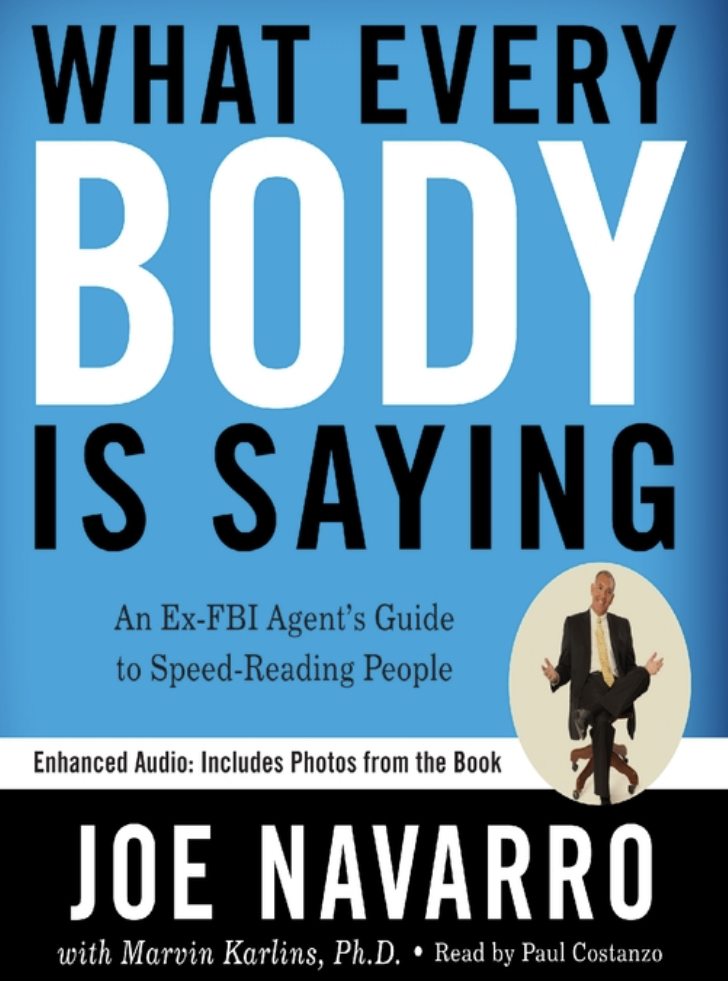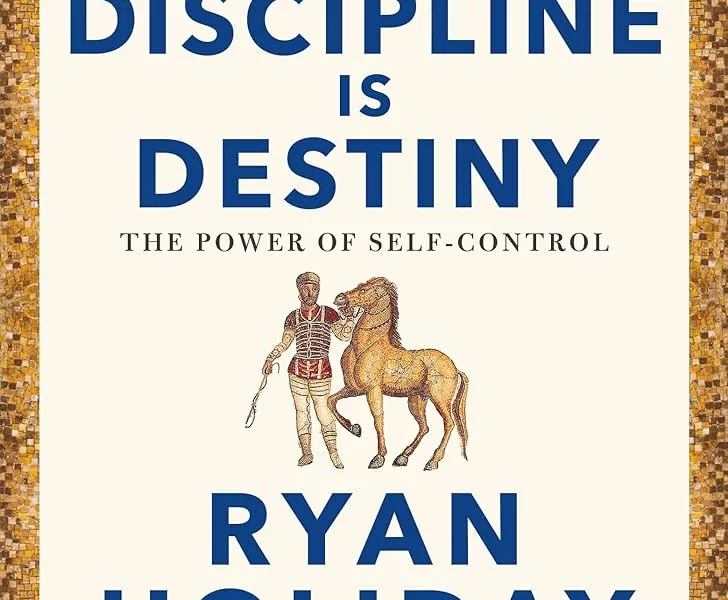What Every BODY is Saying by Joe Navarro is a great read for anyone interested in learning more about the science of body language and how to read it. Navarro does a great job of providing examples and explaining how we unconsciously display signs of discomfort. Although there’s no one behavior that tells us if someone is lying, there are many behaviors that reveal how we’re really feeling. I wouldn’t recommend the audiobook version since the book references diagrams showing different postures, stances, and gestures throughout.
Pairs With: A mocha coffee and hand steepling.
OVERVIEW
Joe Navarro is an ex-FBI agent who spent his career watching and deciphering body language.
Navarro explains that although we lie as a means for survival (and we’ve been trained to lie since we were children), our Limbic brain still gives off clues that we are uncomfortable doing so.
The Limbic brain is the most honest part of our brain and is responsible for our unconscious reactions. It is the part of the brain that regulates our behavior when we’re in danger with either the freeze, flight, or fight response. (Navarro notes that this is the order in which most of us respond – freeze first, then flight, and then if we can’t do either of those then we fight.) Paying close attention to someone’s body language can show when someone’s freeze, flight, or fight response has been triggered.
Someone may freeze by holding their breath or locking their feet behind their chair. A person’s desire to flee shows up by them blocking their eyes, turning their bodies towards the exit, or they may shift away from someone. A person’s fight response is activated if they get in someone’s space or puff up their posture.
When you notice these behaviors, it’s a cue that something about the topic or environment is making the individual uncomfortable. Navarro reminds the reader that there are no behaviors that are 100% accurate on telling if someone is lying or being deceptive. However, you can use these body language cues to notice if someone is uncomfortable and continue to explore further.

Pacifying Behaviors
There are many more subtle body language cues to look for called Pacifying Behaviors. These are movements that a person will make when they are trying to calm themselves down.
When someone is uncomfortable, the limbic brain uses stimulation of nerve endings to calm itself down.
Someone who is uncomfortable with unconsciously use their hands to touch their neck, rub their face/chin, or play with their hair and ear lobe. Hands-on the face may hint that the limbic brain is worked up and needs soothing but feet are the biggest giveaway on how someone is really feeling.
Since feet and legs have been so instrumental to human survival, they continue to tell the truth. The feet will point towards what a person wants (the exit, a person they’re interested in, etc.) and feet will hide when someone is anxious. Feet will also move like crazy when a person is happy (think happy feet and dancing). An interesting exercise to try is to walk up to a group of people standing in a circle chatting. Now pay close attention to their feet. Their upper bodies may turn towards you politely. However, if their feet stay pointing inward they may not be interested in you actually joining their conversation.
If you now notice that someone’s body language isn’t matching their words, try not to take it personally. Instead, use these cues to help you navigate the relationship accordingly.
High Confidence Gestures
One of my favorite things to do is to try to decode politicians’ body language. Politicians are extremely good at conveying confidence through gravity-defying behaviors.
Navarro explains that any movement that is defying gravity and takes energy is a display of confidence. For example, hand steepling is a sign of high confidence (doctors like this move). Also, thumbs pointed upwards are displays of high confidence.
In the end, Navarro explains that you’ll get the most out of understanding someone’s body language if you watch for actions that are out of character.
CONCLUSION
If you want to understand more about body language and how we unconsciously communicate, give this book a read! Navarro does a great job of explaining the science behind our movements and reiterating each point. It was a quick book to listen to and was captivating the whole way through. (Although, I do not recommend the audio version. It was a bit challenging to follow without the diagrams in front of me.)
Maybe you’ll find a newfound love of decoding politicians’ body language too! 😉 If you do, YouTube has a lot of great videos on the topic!
Let us know! Have you read something similar? Do you enjoy learning about the secret tells of body language too?



